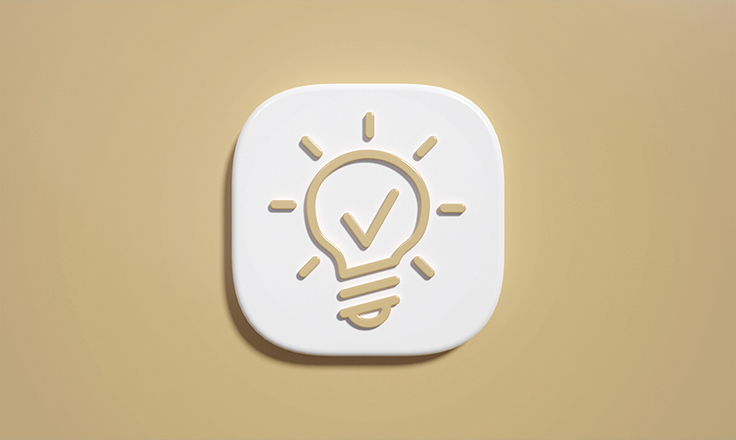SPIRALのPHP(アクション>PHP実行)でGoogleDriveのファイルをダウンロードし、
SPIRALのDBへファイルを格納するサンプルプログラムをご紹介いたします。
全体像
GoogleDriveのAPIを用いてGoogleDrive内のファイルをダウンロードし、
そのファイルをSPIRALのAPIを用いてDBへアップロードします。
GoogleDriveのファイルをダウンロードするにはGoogleAPIのアクセストークンが必要なので取得します。
また、ダウンロードしたいファイルを指定するのにファイルIDも必要な為
GoogleDriveのAPIを用いてファイルIDを取得します。
ダウンロードが出来たらSPIRALのAPIに対して共通モジュールを使用しファイルをアップロードします。
DB設定
任意のDBを作成し、フィールドタイプでファイルを選択したフィールドを用意してください。
この際ファイルフィールドのIDとフィールド識別名を控えておいてください。
設定方法
Google側の設定(OAuth認証の作成)
Google側に任意のプロジェクトを作成していください。その後Google側設定画面へアクセスしてください。
認証情報より「+認証情報を作成」をクリックして「OAuthクライアントID」をクリックしてください。
アプリケーションの種類は「ウェブアプリケーション」
承認済みのリダイレクトURIには「http://localhost/oauth2callback.php」と入力してください。
そのまま作成まで進み、モーダルに「クライアントID」と「クライアントシークレット」が表示されますので、必ず控えてください。
次に「OAuth同意画面」をクリックしてください。
「OAuth consent screen」では任意の情報を入力してください。
「スコープ」では何も入力しなくて大丈夫です。
「Test users」ではテストユーザにご自身のログインされているGoogleアカウント(Gmail)を入力してください。
ファイルのダウンロードをするにはアクセストークンが必要です。
しかし、アクセストークンには有効期限等があるので継続的にファイルのダウンロードが出来るように、
リフレッシュトークンを生成して、リフレッシュトークンからアクセストークンを都度生成する形にします。
設定値ファイルをPHPモジュールに作成
<?php
$client_id = 'クライアントIDを入力';
$client_secret = 'クライアントシークレットを入力';
$redirect_uri = 'http://localhost/oauth2callback.php';
ステップ1 リフレッシュトークンの取得
<?php
require_once "config.php";
$auth_code = ''; // 認証コードをここに入力
if (empty($auth_code)) {
// 認証コードが入力されていない場合、認証URLを生成
$auth_url = 'https://accounts.google.com/o/oauth2/auth?' . http_build_query([
'client_id' => $client_id,
'redirect_uri' => $redirect_uri,
'response_type' => 'code',
'scope' => 'https://www.googleapis.com/auth/drive.readonly',
'access_type' => 'offline',
]);
echo '認証URLをブラウザで開いて、認証コードを取得してください:';
echo PHP_EOL . PHP_EOL;
echo $auth_url . PHP_EOL;
} else {
// 認証コードが入力されている場合、アクセストークンとリフレッシュトークンを取得
$token_url = 'https://oauth2.googleapis.com/token';
$post_fields = [
'code' => $auth_code,
'client_id' => $client_id,
'client_secret' => $client_secret,
'redirect_uri' => $redirect_uri,
'grant_type' => 'authorization_code',
];
$ch = curl_init($token_url);
curl_setopt($ch, CURLOPT_RETURNTRANSFER, true);
curl_setopt($ch, CURLOPT_POST, true);
curl_setopt($ch, CURLOPT_POSTFIELDS, http_build_query($post_fields));
$response = curl_exec($ch);
if ($response === false) {
echo 'Error: ' . curl_error($ch);
curl_close($ch);
exit();
}
curl_close($ch);
$token_data = json_decode($response, true);
var_dump($token_data);
}
?>
そうすると認証URLが出力されますので、そのURLをブラウザに貼り付けて遷移してください。
遷移するとエラーが表示されると思いますが、大丈夫です。
リダイレクトされた後URLに
http://localhost/oauth2callback.php?code=XXX&scope=YYYY
といった形でcodeのパラメータが付与されていますので、
このcodeパラメータ「XXX」を$auth_codeに代入して再度実行してください。
実行結果より「refresh_token」の値を控えてください。
作成したPHPモジュールを編集
<?php
$client_id = 'クライアントIDを入力';
$client_secret = 'クライアントシークレットを入力';
$redirect_uri = 'http://localhost/oauth2callback.php';
$refresh_token = "ステップ2で取得したリフレッシュトークンを入力";
先ほど控えた値を$refresh_tokenの値に入力してください。
ステップ2 ファイルIDの取得
<?php
require_once "config.php";
$folder_id = ""; //フォルダIDを指定
$token_url = 'https://oauth2.googleapis.com/token';
$post_fields = [
'refresh_token' => $refresh_token,
'client_id' => $client_id,
'client_secret' => $client_secret,
'grant_type' => 'refresh_token',
];
$ch = curl_init($token_url);
curl_setopt($ch, CURLOPT_RETURNTRANSFER, true);
curl_setopt($ch, CURLOPT_POST, true);
curl_setopt($ch, CURLOPT_POSTFIELDS, http_build_query($post_fields));
$response = curl_exec($ch);
curl_close($ch);
$token_data = json_decode($response, true);
$access_token = $token_data['access_token'];
$folder_id = isset($folder_id) ? $folder_id : null;
// Google Drive APIを使用してファイルリストを取得
if ($folder_id) {
// フォルダIDが存在する場合、フォルダ内のファイルを取得
$drive_url = 'https://www.googleapis.com/drive/v3/files?q=' . urlencode("'" . $folder_id . "' in parents");
} else {
// フォルダIDが存在しない場合、全てのファイルを取得
$drive_url = 'https://www.googleapis.com/drive/v3/files';
}
$ch = curl_init($drive_url);
curl_setopt($ch, CURLOPT_RETURNTRANSFER, true);
curl_setopt($ch, CURLOPT_HTTPHEADER, [
'Authorization: Bearer ' . $access_token,
]);
$response = curl_exec($ch);
if ($response === false) {
echo 'Error: ' . curl_error($ch);
curl_close($ch);
exit();
}
curl_close($ch);
$file_list = json_decode($response, true);
if (isset($file_list['error'])) {
echo 'Error: ' . $file_list['error']['message'];
exit();
}
// ファイルリストを表示
foreach ($file_list['files'] as $file) {
echo 'File ID: ' . $file['id'] . ' - File Name: ' . $file['name'] . PHP_EOL;
}
?>
実行結果にファイルIDとファイル名が記載されますので、File ID:の後のIDを控えてください。
$file_list['files']にファイルのリストが格納されています。
フォルダの絞り込み等を行いたい場合は
$drive_url = 'https://www.googleapis.com/drive/v3/files?q=' . urlencode("'" . $folder_id . "' in parents");の様な形でAPIの接続先にパラメータを付与してリクエストを行ってください
パラメータの仕様については下記Google公式リファレンスをご確認ください。
Method: files.list
ファイルやフォルダを検索する
ステップ3 ファイルダウンロード及びSPIRALへアップロード
<?php
require_once "config.php";
//------------------------------
// 設定値
//------------------------------
define("API_URL", "https://api.spiral-platform.com/v1");
define("API_KEY", "");
define("APP_ROLE", "");
define("DB_ID", ""); //ファイルを格納するDBID
define("APP_ID", ""); //ファイルを格納するDBが属しているアプリID
$fileFieldId = "1"; //ファイルフィールドID
$fileFieldName = "file"; //ファイルフィールド識別名
$commonBase = CommonBase::getInstance();
$fileName = "image.png"; //アップロード時のファイル名
// ダウンロードするファイルIDを指定
$file_id = 'ステップ2で控えたFileIDを入力';
$token_url = 'https://oauth2.googleapis.com/token';
$post_fields = [
'refresh_token' => $refresh_token,
'client_id' => $client_id,
'client_secret' => $client_secret,
'grant_type' => 'refresh_token',
];
$ch = curl_init($token_url);
curl_setopt($ch, CURLOPT_RETURNTRANSFER, true);
curl_setopt($ch, CURLOPT_POST, true);
curl_setopt($ch, CURLOPT_POSTFIELDS, http_build_query($post_fields));
$response = curl_exec($ch);
curl_close($ch);
$token_data = json_decode($response, true);
$access_token = $token_data['access_token'];
$download_url = "https://www.googleapis.com/drive/v3/files/{$file_id}?alt=media";
// cURLでファイルをダウンロード
$ch = curl_init($download_url);
curl_setopt($ch, CURLOPT_RETURNTRANSFER, true);
curl_setopt($ch, CURLOPT_HTTPHEADER, [
'Authorization: Bearer ' . $access_token,
]);
$response = curl_exec($ch);
curl_close($ch);
//以下ダウンロードしたファイルをDBへ保存
//ファイルアップロードトークン発行
$apiUrlPass = "/apps/". APP_ID. "/dbs/". DB_ID. "/". $fileFieldId. "/files/uploadToken";
$apiResponse = $commonBase->apiCurlAction("POST", $apiUrlPass);
$fileUploadToken = $apiResponse["fileUploadToken"];
//ファイルアップロード
$apiUrlPass = "/apps/". APP_ID. "/dbs/". DB_ID. "/". $fileFieldId. "/files";
// リクエストボディ(マルチパート形式)
$requestBody = "--WebKitFormBoundary7MA4YWxkTrZu0gW\r\n";
$requestBody .= "Content-Disposition: form-data; name=\"file\"; filename=\"". $fileName. "\"\r\n";
$requestBody .= "Content-Type: image/png\r\n\r\n";
$requestBody .= $response. "\r\n";
$requestBody .= "--WebKitFormBoundary7MA4YWxkTrZu0gW\r\n";
$requestBody .= "Content-Disposition: form-data; name=\"fileUploadToken\"\r\n\r\n";
$requestBody .= $fileUploadToken. "\r\n";
$requestBody .= "--WebKitFormBoundary7MA4YWxkTrZu0gW--";
$contentType = "Content-Type: multipart/form-data; boundary=WebKitFormBoundary7MA4YWxkTrZu0gW";
$apiResponse = $commonBase->apiCurlAction("POST", $apiUrlPass, $requestBody, $contentType);
// 登録するデータを指定
$insertData = array(
$fileFieldName => array($apiResponse["fileKey"]),
);
$resultRecordInsert = $commonBase->apiCurlAction("POST", "/apps/". APP_ID. "/dbs/". DB_ID. "/records", $insertData);
//------------------------------
// 共通モジュール
//------------------------------
class CommonBase {
/**
* シングルトンインスタンス
* @var UserManager
*/
protected static $singleton;
public function __construct() {
if (self::$singleton) {
throw new Exception('must be singleton');
}
self::$singleton = $this;
}
/**
* シングルトンインスタンスを返す
* @return UserManager
*/
public static function getInstance() {
if (!self::$singleton) {
return new CommonBase();
} else {
return self::$singleton;
}
}
/**
* V2用 API送信ロジック
* @return Result
*/
function apiCurlAction($method, $addUrlPass, $data = null, $multiPart = null, $jsonDecode = null) {
$header = array(
"Authorization:Bearer ". API_KEY,
"X-Spiral-Api-Version: 1.1",
);
if($multiPart) {
$header = array_merge($header, array($multiPart));
} else {
$header = array_merge($header, array("Content-Type:application/json"));
}
if(APP_ROLE){
$header = array_merge($header, array("X-Spiral-App-Role: ".APP_ROLE));
}
// curl
$curl = curl_init();
curl_setopt($curl, CURLOPT_RETURNTRANSFER, true);
curl_setopt($curl, CURLOPT_URL, API_URL. $addUrlPass);
curl_setopt($curl, CURLOPT_HTTPHEADER, $header);
if ($method == "POST") {
if ($multiPart) {
curl_setopt($curl, CURLOPT_POSTFIELDS, $data);
} else {
curl_setopt($curl, CURLOPT_POSTFIELDS , json_encode($data));
}
curl_setopt($curl, CURLOPT_CUSTOMREQUEST, $method);
}
if ($method == "PATCH") {
curl_setopt($curl, CURLOPT_POSTFIELDS, json_encode($data));
curl_setopt($curl, CURLOPT_CUSTOMREQUEST, $method);
}
if ($method == "DELETE") {
curl_setopt($curl, CURLOPT_POSTFIELDS, json_encode($data));
curl_setopt($curl, CURLOPT_CUSTOMREQUEST, $method);
}
$response = curl_exec($curl);
if (curl_errno($curl)) echo curl_error($curl);
curl_close($curl);
if($jsonDecode){
return $response;
}else{
return json_decode($response, true);
}
}
}
?>
設定値をご自身の環境に合わせて修正してください。
$file_idにはステップ3で控えた値を入力してください。
修正が完了し、実行すると指定したファイルがSPIRALへアップロードされます。
その他
外部(Google)との連携になりますので、データの取扱や認証情報の取り扱いには十分お気をつけください。
特にクライアントIDやクライアントシークレット、認証キー等は他人に絶対に知られない様にしてください。
知られてしまうとGoogleアカウント上のデータが他人に操作、閲覧されてしまう可能性がございます。

